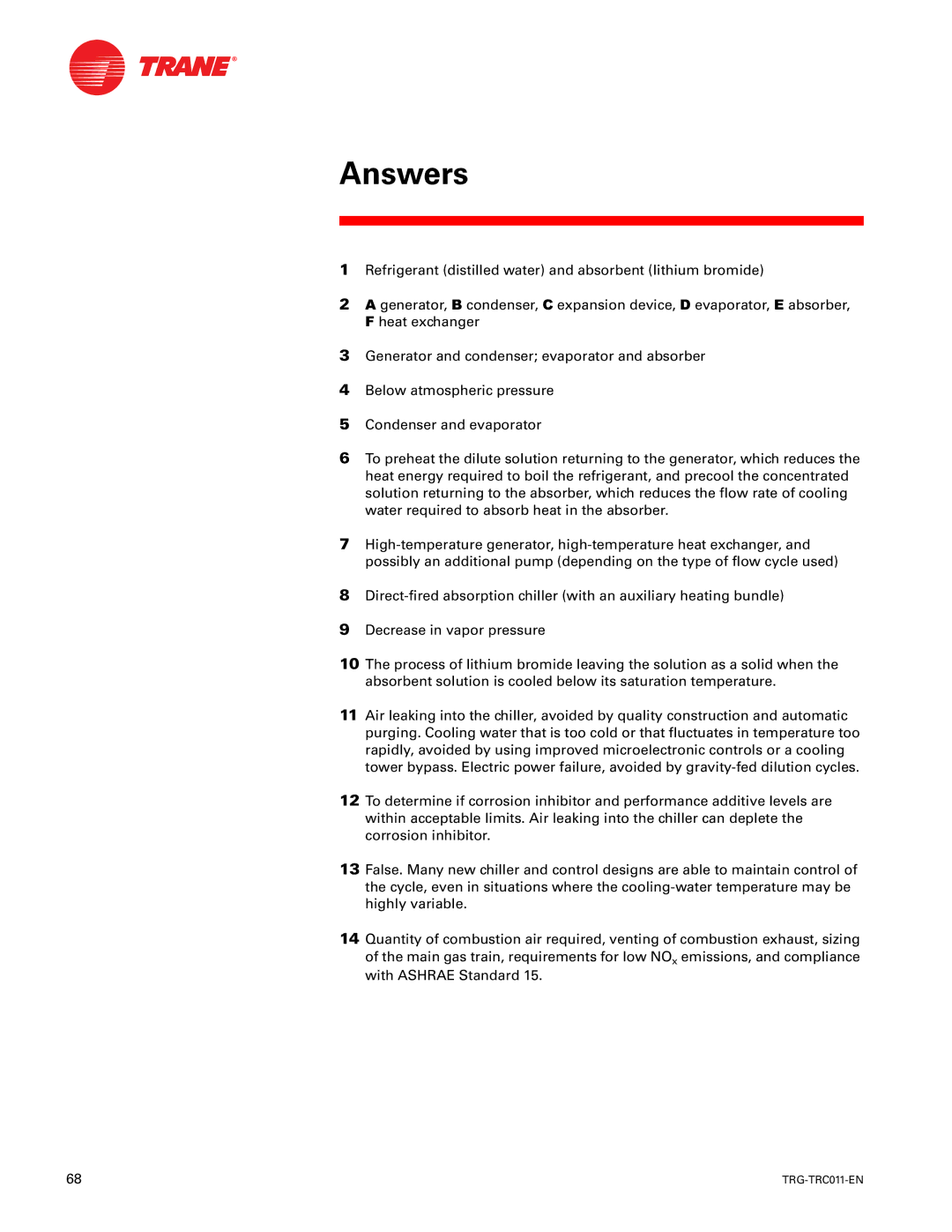
Answers
1Refrigerant (distilled water) and absorbent (lithium bromide)
2$ generator, % condenser, & expansion device, ' evaporator, ( absorber, ) heat exchanger
3Generator and condenser; evaporator and absorber
4Below atmospheric pressure
5Condenser and evaporator
6To preheat the dilute solution returning to the generator, which reduces the heat energy required to boil the refrigerant, and precool the concentrated solution returning to the absorber, which reduces the flow rate of cooling water required to absorb heat in the absorber.
7
8
9Decrease in vapor pressure
10The process of lithium bromide leaving the solution as a solid when the absorbent solution is cooled below its saturation temperature.
11Air leaking into the chiller, avoided by quality construction and automatic purging. Cooling water that is too cold or that fluctuates in temperature too rapidly, avoided by using improved microelectronic controls or a cooling tower bypass. Electric power failure, avoided by
12To determine if corrosion inhibitor and performance additive levels are within acceptable limits. Air leaking into the chiller can deplete the corrosion inhibitor.
13False. Many new chiller and control designs are able to maintain control of the cycle, even in situations where the
14Quantity of combustion air required, venting of combustion exhaust, sizing of the main gas train, requirements for low NOx emissions, and compliance with ASHRAE Standard 15.
68 |
|
